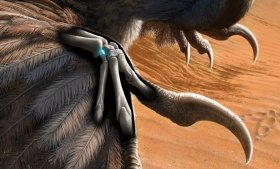News & Stories
The stories of the Faculty of Arts and Sciences: the achievements and activities of our faculty, departments, and programs.
Search & Filter
Applied Filters:
-
A global competition to combine AI with climate solutions has named a project led by Elizabeth Yankovsky, Assistant Professor of Earth & Planetary Sciences, as one of two Yale-related projects among its winning ideas.

-
An international team including David Evans, Professor of Earth and Planetary Sciences, may have solved a magnetic field mystery contained in 565-million-year-old rocks.

-
A research partnership between Yale and the University of São Paulo (USP), led by Professor of Earth & Planetary Sciences David Evans, is advancing new understanding of Earth’s early geological history.

-
A new study led by Damanveer Singh Grewal, an assistant professor of Earth and planetary science in Yale’s Faculty of Arts and Sciences, suggests that planetesimals in the early solar system emerged from a succession of high-energy collisions.

-
In a Q&A, geochemist Gabby Kitch talks about an innovative Yale Center for Natural Carbon Capture project—based in part on science conducted by faculty in the Department for Earth and Planetary Sciences—that will accelerate the oceans’ natural ability to store carbon dioxide.

-
Lidya Tarhan, Assistant Professor of Earth and Planetary Sciences, speaks to Yale News about her new study that tracks the evolution of marine sediment layers across hundreds of millions of years.

-
Skinner, a prominent figure in the field of medical geology, was also among the first women to lead a residential college at Yale.

-
FAS chemists, evolutionary biologists, and geochemists make waves with their latest research and collaborations.

-
The evolutionary path from dinosaurs to birds included the development of a tiny wrist bone that ultimately proved crucial for stabilizing wings in flight.

-
In the latest “Rose Walk and Talk,” Yale paleontologist Bhart-Anjan Bhullar shares his thoughts — just in time for the next “Jurassic World” movie — on which dinosaurs would have been most aggressive around humans.
